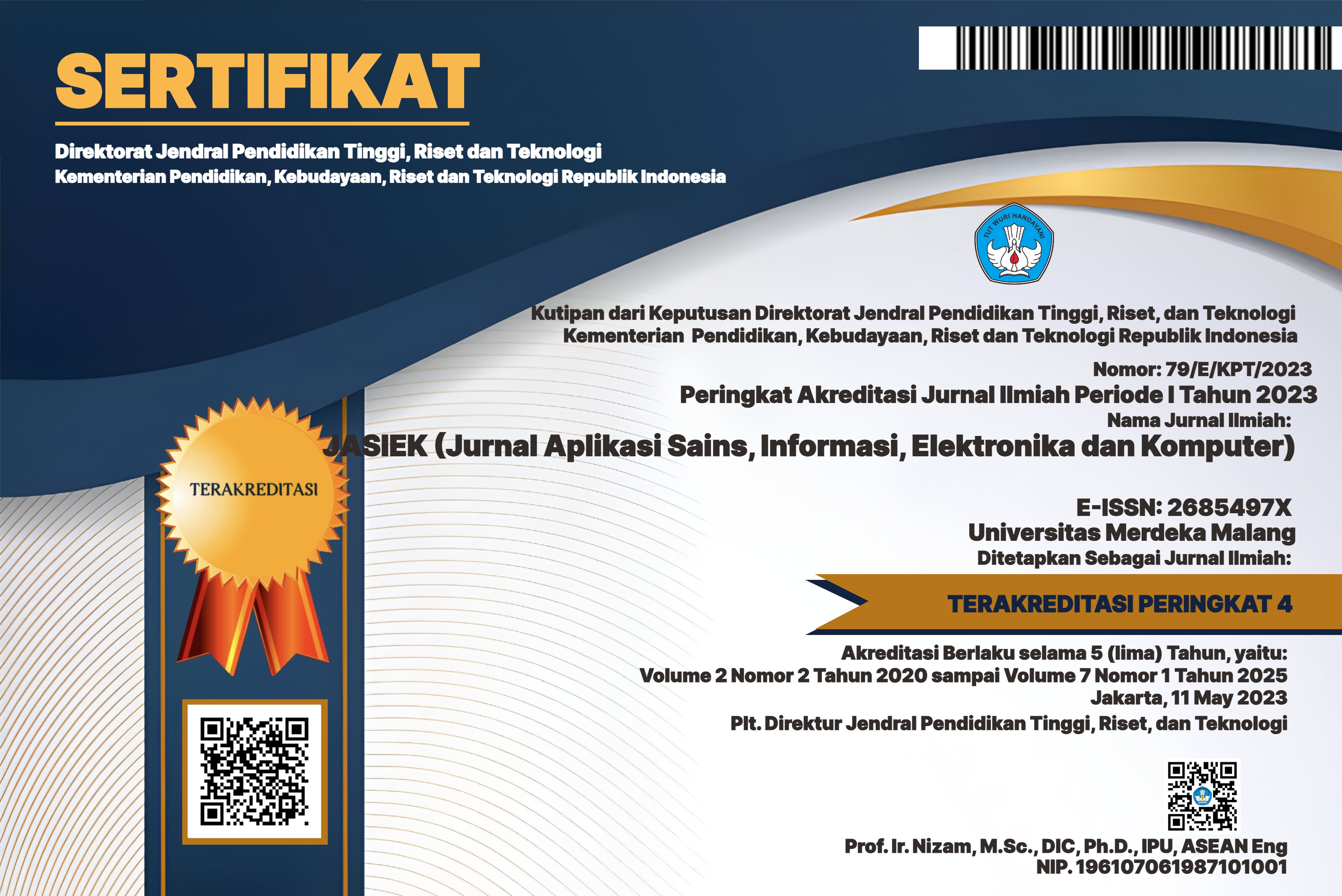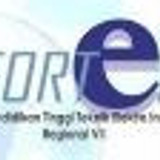OPTIMASI SISTEM KOMUNIKASI DARI HT DENGAN HP DALAM PELAKSANAAN TUGAS OPERASI TNI AD MENGGUNAKAN METODE DTMF
DOI:
https://doi.org/10.26905/jasiek.v1i1.3150Abstract
Penggunaan alat komunikasi merupakan kebutuhan pokok TNI AD pada pelaksanaan tugas operasi militer. Sejauh ini pelaksanaan tugas operasi militer TNI-AD di daerah terpencil memiliki kendala yaitu kurang terpantau secara langsung oleh para unsur pimpinan di TNI-AD yang posisinya tidak ada signal. Hal ini disebabkan karena sarana alat komunuikasi yang terbatas diantaranya Handphone (HP) dan Handy Talky (HT) yang belum dapat digunakan sebagai sarana komunikasi pada pelaksanaan operasi militer yang letaknya di daerah tidak ada signal. Dari permasalahan yang ada dibuat suatu penelitian membuat suatu perangkat sistem komunikasi yang dapat berkomunikasi hingga ke daerah yang tidak terangkau oleh sinyal BTS. Dalam penelitian ini, dibuat suatu alat dengan sistem komunikasi dari HT dengan HP menggunakan metode Dual Tone Multi Frekuensi (DTMF). Penelitian ini menggunakan beberapa peralatan diantaranya 3 unit HT, HP, DTMF, mikrokontroler Atmega8, max232, dan wavecom. Sehingga sistem komunikasi dapat dilaksanakan dari dua arah secara full duplex.Downloads
References
A. Harjanto, “Rancang Bangun Aplikasi Pengenalan File Gambar Bitmap Menggunakan Metode Backpropagation,†J. JUPITER, 2018.
I. Mujahidin, “Directional 1900 MHz Square Patch Ring Slot Microstrip Antenna For WCDMA,†JEEMECS (Journal Electr. Eng. Mechatron. Comput. Sci., 2019.
Sumardi, “Perancangan Sistem Starter Sepeda Motor Menggunakan Aplikasi Android Berbasis Arduino Uno,†in Prosiding Seminar Ilmu Komputer dan Teknologi Informasi, 2017.
I. Mujahidin, R. Yuwono, and A. Mustofa, “Rancang Bangun Rectifier Antenna Mikrostrip Ufo Pada Frekuensi Ultra Wideband (UWB) Sebagai Pemanen Energi Elektromagnetik,†J. Mhs. TEUB, vol. 3, no. 2, 2015.
Mujahidin, I., Pramono, S. H., & Muslim, A. (2018, October). 5.5 Ghz Directional Antenna with 90 Degree Phase Difference Output. In 2018 Electrical Power, Electronics, Communications, Controls and Informatics Seminar (EECCIS) (pp. 224-228). IEEE.
A. Faroqi, A. Fitriadi, and N. U. Adiningsih, “Sistem Kendali Pintu Rumah Menggunakan SMS Gateway Berbasis Arduino Uno dan Sensor Ultrasonik,†TELKA - Telekomun. Elektron. Komputasi dan Kontrol, 2018.
R. Yuwono, I. Mujahidin, A. Mustofa, and Aisah, “Rectifier using UFO microstrip antenna as electromagnetic energy harvester,†Adv. Sci. Lett., 2015.
W. Arianti, A. Affandi, and D. S. Rahardjo, “Rancang Bangun Layanan Internet Protocol Television (IPTV) Terintegrasi Pada Jaringan IPTV Publik,†Jur. Tek. Elektro, Fak. Teknol. Ind. Inst. Teknol. Sepuluh Novemb., 2012.
A. Silvia, Haritman & Muladi, “Rancang Bangun Akses Kontrol Pintu Gerbang Berbasis Arduino Dan Android,†Electrans, 2014.
I. Oktariawan, Martinus, and Sugiyanto, “Pembuatan Sistem Otomasi Dispenser Menggunakan Mikrokontroler Arduino Mega 2560,†J. FEMA, 2013.
F. Zahro Aska, D. Satria, and W. Kasoep, “Implementasi Radio Frequency Identification (RFID) Sebagai Otomasi Pada Smart Home,†Fak. Teknol. Inf. Univ. Andalas, 2012.
Downloads
Published
Issue
Section
License
Authors who publish with this journal agree to the following terms:
The journal allow the authors to hold the copyright without restrictions and allow the authors to retain publishing rights without restrictions.
Authors retain copyright and grant the journal right of first publication with the work simultaneously licensed under a Creative Commons Attribution-ShareAlike 4.0 International License that allows others to share the work with an acknowledgement of the work's authorship and initial publication in this journal.
Authors are able to enter into separate, additional contractual arrangements for the non-exclusive distribution of the journal's published version of the work (e.g., post it to an institutional repository or publish it in a book), with an acknowledgement of its initial publication in this journal.
Authors are permitted and encouraged to post their work online (e.g., in institutional repositories or on their website) prior to and during the submission process, as it can lead to productive exchanges, as well as earlier and greater citation of published work (See The Effect of Open Access).

This work is licensed under a Creative Commons Attribution-ShareAlike 4.0 International License.










